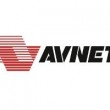

Hewlett Packard Enterprise has announced new innovations that help organisations rapidly, securely and cost-effectively deploy Internet of Things (IoT) devices in wide area, enterprise and industrial deployments. (more…)
December 2, 2016
Posted by: Avadhoot Patil

Avnet, Inc, a global technology distributor, released an add-on module and reference design for its MicroZed™ Industrial IoT Kit, bringing Trusted Platform Module (TPM) security capabilities for platform integrity, (more…)
Posted by: Avadhoot Patil

Oasis demonstrated the cellular connectivity solution made for mobile network operators (MNOs) and original equipment manufacturers (OEMs) during the recent ARM TechCon show in Santa Clara, California. The solution is said to be based on the enhanced version of HeliOS Embedded SoftSIM product running on an ARM based chip. (more…)
November 30, 2016
Posted by: Avadhoot Patil

An earlier blog titled “Don’t leave it to IT” focused on the need for a clear, defined strategy, something that has to come from C-level management, writes Bob Emmerson, freelance writer and IoT industry observer. (more…)
Posted by: Avadhoot Patil

LTE for IoT chipmaker Sequans Communications S.A. and Dutch start-up, Pycom, maker of multi-network IoT development boards, report that the newest Pycom IoT platform, FiPy, will include LTE powered by Sequans’ Monarch LTE Cat M1/NB1 chip. (more…)
November 25, 2016
Posted by: Avadhoot Patil
The Industrial IoT (IIoT) provides manufacturers in all industries with greater connectivity that in turn, generates valuable information and intelligence regarding operations. By leveraging this intelligence, they are able to attain significant efficiencies and manufacturing improvements. (more…)
Posted by: Avadhoot Patil

Dialog Semiconductor plc, a provider of integrated power management, AC/DC power conversion, solid state lighting (SSL) and Bluetooth® low energy (LE) technology, has announced the availability of its latest Apple HomeKit development kit. (more…)
November 24, 2016
Posted by: Avadhoot Patil

Organisations have woken up to what’s possible when you can communicate with your mobile assets using satellite communications. (more…)
Posted by: Avadhoot Patil

Huawei, a global ICT solution provider, has joined the MulteFire Alliance, an independent organisation dedicated to the promotion and development of MulteFire technology. (more…)
November 23, 2016
Posted by: Avadhoot Patil

It’s a common phrase that we’ve all used from time to time. And it’s frustrating. Especially when all of those ‘cooks’ are the equivalent of Michelin Starred experts. But as the vision of the Internet of Things becomes a more ubiquitous reality, many needs and interests have to be unified. (more…)
Posted by: Avadhoot Patil